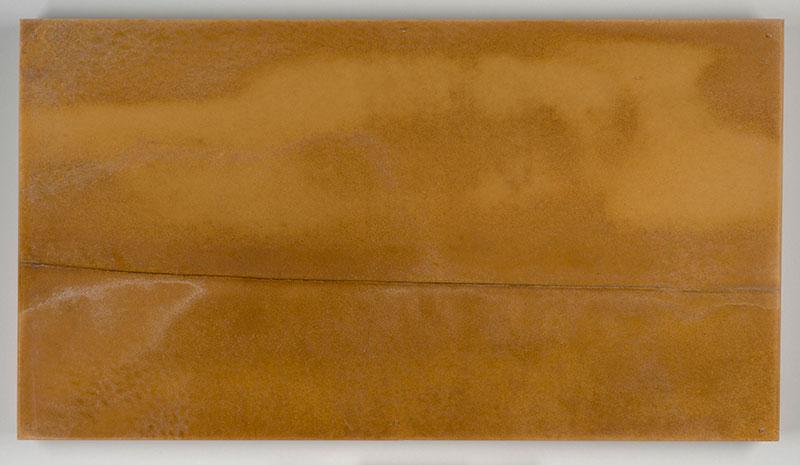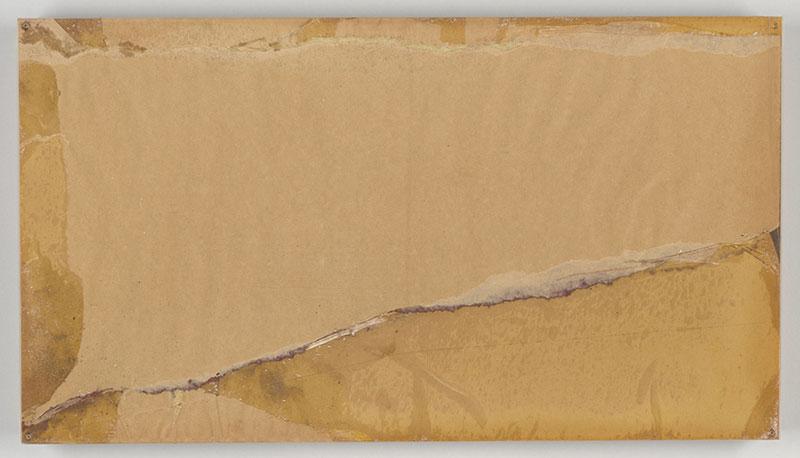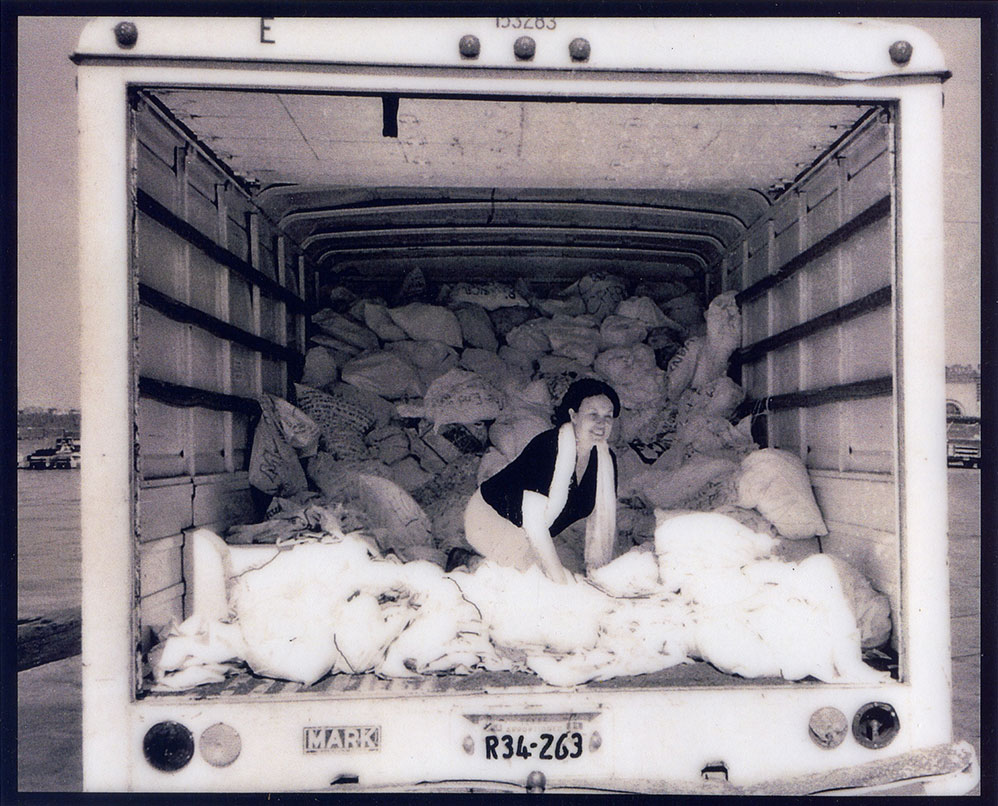Helène Aylon’s mature career began in the late 1960s, when she was nearly forty years old and already a widow raising two children. In 1977 and ‘78, she was among ten women interviewed by the writer Gloria Frym for a volume called Second Stories: Conversations with Women Whose Artistic Careers Began After Thirty-Five. Aylon described her early life growing up in an Orthodox Jewish enclave in Borough Park, Brooklyn: “I lived on the same street from the time I was born until I got married. It never occurred to me, when I grew up, that I could have my own apartment some day. This was unheard of in my ‘circles.’” 1 She married a Rabbi at eighteen, noting that their life together offered many opportunities for “beauty and meaning and associations,” but that “as an individual I had to be very cautious—almost erased.” 2 At the time of the interview with Frym, Aylon offered this information about her previous life hesitatingly. Only in the 1990s would this aspect of her identity begin to figure explicitly in her art. In the 1970s, Aylon was still immersed in the first chapter of a career that she later referred to as if it were a play in three intricately interconnected acts: Body-Earth-God.
The Morgan’s collection includes two works from this early phase: Sparkling Firmament (1973) and Torn Drawing (1973). They are part of a larger series called “Paintings that Change in Time,” which Aylon began following her transformational move from New York to Berkeley, California, in 1973. Working in a range of sizes, she applied oil and sometimes other materials, like pigment and glue, to sheets of paper. She said, “I painted from behind the surface of the paper, allowing the oils to seep through naturally, in their own time, outside of my doing. I’d wait for the image to manifest on the front surface through chance—absorption—and I would accept the outcome. … I wanted the art to tell me something that I did not know.” 3 She viewed this approach as implicitly feminist, contrasting it with the popular image of the male artist making his mark; most famously, one thinks of Hans Namuth’s photos of Jackson Pollock flinging paint. On the occasion of an exhibition of these works at the Betty Parsons and Susan Caldwell galleries in 1975, Lawrence Alloway noted that the “slowness of the paintingsʼ change rather than the fact of their change, is the crucial factor.” “The date on one of these paintings is like a birth-date, a starting point,” he wrote. 4 Once sealed behind Plexiglas, the images developed outside of Aylon’s control, like the shimmering air pockets that gave Sparkling Firmament its title. Of one painting, she commented, “I understand how these cracks form, but I do not understand why they shift, even disappear at intervals.” 5 It was precisely this lack of mastery—and the mysteriousness of the physical world—that appealed to Aylon.
By the end of the decade, she had found a way to make the latent corporeality of the “Paintings that Change in Time” explicit with the series she called “The Breakings.” She poured a gallon and a half of linseed oil on top of a very large sheet of paper adhered to flexible Plexiglas, leaving it to pool for several weeks until it formed a skin-like sac. She enlisted helpers, whom she called midwives, to raise the sheet vertical, forcing the liquid oil beneath the hardened skin to the bottom of the sac. When the sac broke, oil oozed over the sheet in unpredictable ways. Zoe Mullery, who assisted Aylon beginning in 1979, has observed that “wherever the oil made contact with the paper, the paper became translucent, and the linseed dried in branching patterns of warm honey gold.” 6
As with the “Paintings that Change in Time,” the eruptive moment of birth was only prelude to what “The Breakings” would subsequently become as the paper absorbed the oil. These groundbreaking works, which married process, performance, and feminism, paved the way for the next phase of Aylon’s extraordinary career—Earth—in which she enacted collaborative rituals that addressed the existential threat of nuclear war.
This women’s history month, I honor the memory of Helène Aylon. Her mind was still swarming with ideas for installations and projects when she passed away from COVID-19 at the age of eighty-nine.
Rachel Federman
Associate Curator
Modern and Contemporary Drawings
- Helène Aylon in conversation with Gloria Frym, in Second Stories: Conversations with Women Whose Artistic Careers Began After Thirty-Five (San Francisco: Chronicle Books, 1979), 19.
- Ibid., 18.
- Helène Aylon, Whatever is Contained Must Be Released: My Jewish Orthodox Girlhood, My Life as a Feminist Artist (New York: The Feminist Press, 2012), 152–153.
- Lawrence Alloway, “Helène Aylon: Paintings that Change in Time,” exhibition brochure, 1975.
- Aylon quoted in Ibid.
- E-mail from Zoe Mullery to the author, March 5, 2021. Thanks to Zoe for reading this piece and offering her astute feedback.



